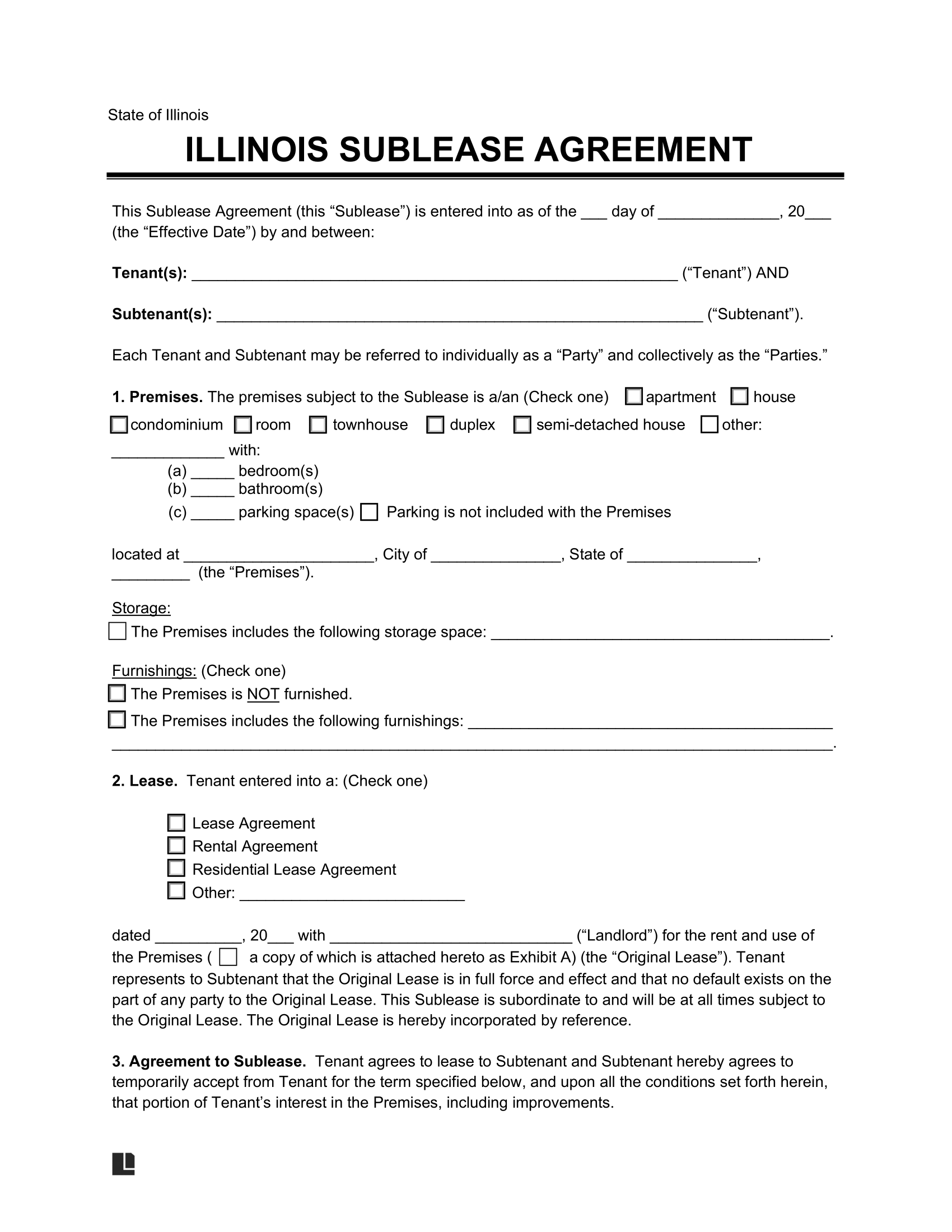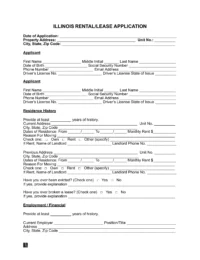An Illinois sublease agreement allows a tenant to rent out their leased property, partially or in full, to another tenant. While the subtenant must adhere to the original lease’s terms, the primary tenant remains responsible for any damages or lease violations by the subtenant.
If the original lease allows subletting or doesn’t mention it, the tenant can sublease without landlord permission. However, if the lease requires landlord consent or prohibits subletting, doing so without approval breaches the original lease.
Laws & Requirements
Sublease and Assignment Provision Laws: No.
Landlord-Tenant Laws: (765 ILCS 705/) Landlord and Tenant Act.
Security Deposit Obligations: The security deposit must be returned within 45 days of the end of the sublease.
Notices: In Illinois, sublessors must provide subtenants five days’ written notice to pay rent or leave. They also need to give the following day’s written notice of the intent not to renew the sublease and/or original lease, depending on how often rent is paid: seven days for a tenancy where rent is paid weekly, 30 days for a tenancy where rent is paid monthly or quarterly, 60 days for a tenancy where rent is paid yearly.
Permission to Sublet
In Illinois, tenants need written permission from their landlord to sublet their rental.
- Laws: Illinois doesn’t have specific laws about a tenant’s right to sublet. The lease agreement determines if subletting is allowed.
- Explicit Written Consent: Generally yes, unless stated otherwise in the original lease
- Landlord’s Right to Reject: Not specified.
Tax Obligations
Sample
Below, you can download a free Illinois sublease agreement template to start creating your contract.

Related Forms
Rental Application
Helps landlords vet potential tenants properly before signing a lease.

